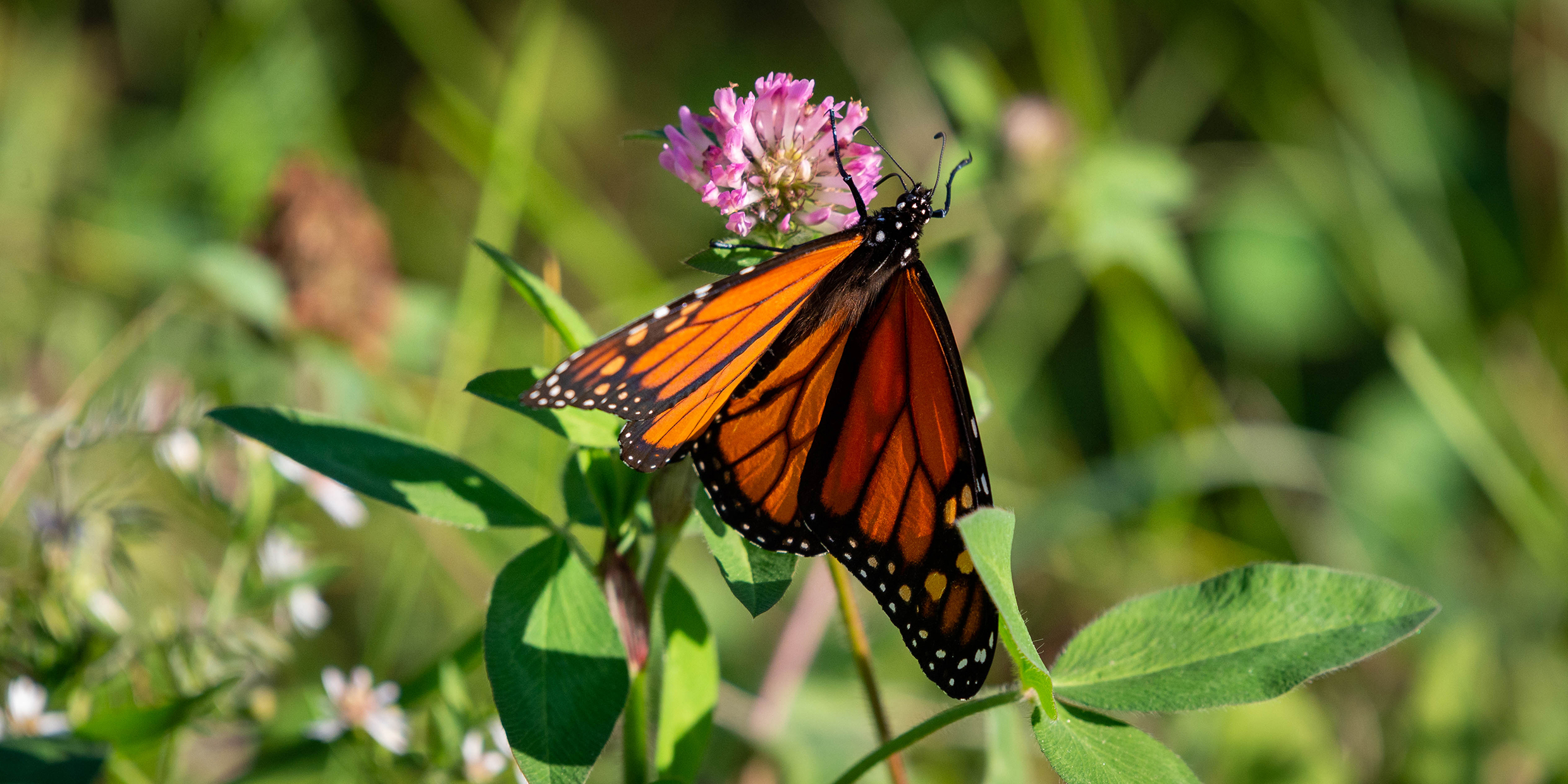Originally published 21 March 2000
Last week I described a visit to the Chincua monarch butterfly sanctuary in the mountains of central Mexico. Each winter, tens of millions of monarchs from all over eastern North America congregate at Chincua, and a few other patches of nearby forest, to hibernate, feed, and breed.
These astonishing gatherings became known to the outside world only in 1975, when Canadian zoologist Fred Urquhart tracked the monarchs to their winter roosts. How the butterflies find their way, year after year, to these same few small clumps of trees remains one of the great mysteries of animal migration.
Not long after Urquhart’s discovery, conservationists realized that the monarch’s winter roosts were threatened by logging and agricultural activities. Led by Mexican poet Homero Aridjis, they pressured the Mexican government into establishing a few small sanctuaries enclosing the principle areas of congregation.
The monarch sanctuaries remain hard-pressed by logging, and conservationists continue to fight for more vigorous protection of the butterflies. In recent years, tourism has changed the equation of conservation as thousands troop through the forest to see one of the great wonders of the natural world. It is inevitable that the butterflies will attract increasing numbers of admirers.
As I made the long climb up and down the dusty, rugged trail that led to the clustered butterflies, I observed the other people who made the trek. A few were Yankee tourists like myself, with our fanny packs, Vibram soles, expensive cameras and binoculars. But the majority of folks along the trail were Mexican, and, as far as I could see, they were not the sort of affluent, middle-class sightseers you’d meet in Yellowstone or Yosemite.
They were people of all ages — old men and women, children, and everyone in between — apparently country people, or city dwellers who had not yet abandoned country ways. Like the rest of us, they struggled along the steep trail, choking on dust, pursuing a goal we could only vaguely imagine.
It may be that these people were propelled toward their goal by the same combination of curiosity and wonder that motivates visitors to Old Faithful or the Grand Canyon. But I don’t think so. The only place I have seen similar assemblies of trekkers — old and young making a difficult climb — is on the holy mountains of western Ireland on the annual days of religious pilgrimage.
As we reached the tiny clump of trees festooned with butterflies as thick as jungle foliage, we Yankees buzzed about, snapping pictures, taking notes, storing up impressions with which to later regale our friends back home. The Mexicans by and large sat silently in the forest, kids in laps, eyes somberly fixed on the massed monarchs. It was difficult to read their emotions, but I have seen the same expressions among the faithful on the summits of Ireland’s Mount Brandon and Croagh Patrick.
I think that many of the Mexican visitors to the Chincua Monarch Sanctuary are driven by the same urge that might have led them on another weekend to the Virgin’s shrine at Guadaloupe — a sense of the holy.
The “holy” thing I am talking about is not some supernatural intrusion into creaturedom. Whatever it might be, it resides in the ceaselessly spinning DNA and chemical machinery that causes a creeping caterpillar to rearrange its molecules into a winged angel, and sends the adult butterfly beating down across a continent to a patch of firs trees in Mexico it has never seen before.
The philosopher William James said, “At bottom, the whole concern of religion is with the manner of our acceptance of the universe.” What I think I saw on the faces of the Mexican visitors to Chincua was a dignified and unquestioning acceptance, an understanding that what they saw was natural and right and utterly essential to the completeness of creation.
The poet E.E. Cummings wrote of acceptance “for everything which is natural which is infinite which is yes.” Science and politics alone will not save the monarchs, any more than they will save other threatened species and habitats. What is required is something that we have by and large lost in the high-tech, high-velocity, virtual world of the developed countries: A deeply-felt, unintellectualized, instinctive “yes” — that behind the gaudy delight of 20 million butterflies hanging on fir trees, there is a holy power of which we are a part, and from which we separate ourselves at our peril.



